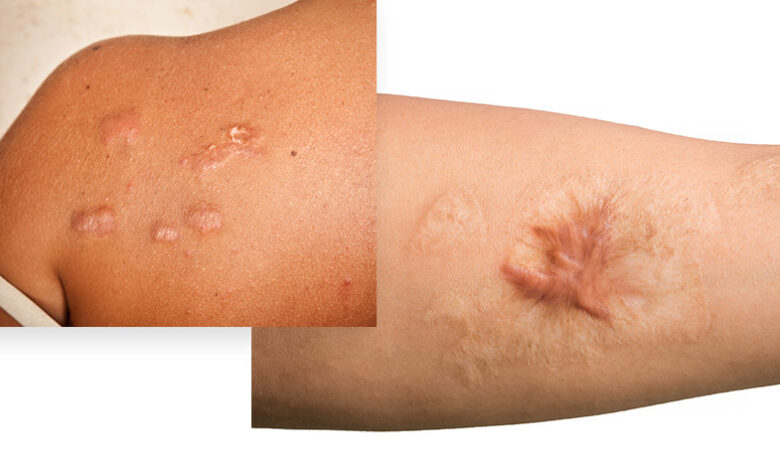Understanding Keloids and Effective Treatment Options

Keloids are a common skin concern that can affect anyone after an injury, surgery, piercing, or even acne. Unlike normal scars that fade over time, keloids grow beyond the original wound area, forming raised, firm, and sometimes itchy or painful tissue. For many people, keloids are more than just a cosmetic issue; they can impact confidence, cause discomfort, and even limit movement depending on their location. Understanding what keloids are, why they form, and the available treatment methods is the first step toward managing them effectively.
What Are Keloids?
Keloids are the result of an overproduction of collagen during the skin’s healing process. When the body repairs a wound, it generates collagen fibers to close the area. However, in the case of keloids, the body continues producing collagen even after the wound has healed, leading to a raised scar that extends beyond the injury site.
Keloids can vary in size and color. They may appear pink, red, or darker than the surrounding skin. While harmless, they can cause itching, tenderness, or even pain. People with darker skin tones are more prone to developing keloids, though they can occur in individuals of any ethnicity.
Common Causes of Keloids
Keloids can appear in different situations, including:
- Surgical scars – after operations or medical procedures.
- Acne scars – when pimples or cysts heal abnormally.
- Piercings or tattoos – especially in areas like the earlobes.
- Burns or injuries – even minor cuts or scratches can sometimes result in keloid formation.
Not everyone who experiences these skin traumas develops keloids, but those with a family history are often more susceptible.
Challenges of Living with Keloids
Beyond physical discomfort, keloids can impact self-esteem. For instance, a large keloid on the face, neck, or arms may make individuals feel self-conscious in social settings. In some cases, keloids can even restrict movement if they form over joints or in high-flexibility areas like the shoulders or knees.
Because of these challenges, many people seek safe and effective methods to reduce or eliminate keloids.
Treatment Options for Keloids
Several approaches are available for managing keloids, ranging from medical procedures to at-home solutions. The effectiveness of each treatment varies depending on the individual and the severity of the scar.
1. Medical Procedures
- Surgical removal: A doctor can cut out the keloid, though there is a risk of it growing back even larger.
- Corticosteroid injections: These help reduce inflammation and flatten the scar over time.
- Laser therapy: Improves skin texture and reduces discoloration, though it may require multiple sessions.
- Cryotherapy: Freezing the keloid with liquid nitrogen can shrink smaller scars.
2. Topical and Non-Invasive Treatments
For many people, non-surgical options are more appealing because they are less risky and can be applied consistently at home. Creams, gels, and liquids designed for scar management can help flatten and soften keloids over time. These treatments often include ingredients that hydrate the skin, improve elasticity, and reduce the appearance of raised scars.
One effective solution available today is Keloid Removal, which is formulated specifically to target keloid scars and promote healthier skin recovery. This type of treatment can be a safer and more convenient option compared to invasive procedures.
Preventing Keloids Before They Form
While not all keloids can be prevented, there are steps people can take to minimize the risk:
- Treat wounds promptly – Clean cuts or scratches properly to reduce infection and irritation.
- Avoid unnecessary piercings or tattoos – Especially if you are prone to keloids.
- Use protective dressings – Applying silicone sheets or pressure dressings after surgery can help reduce abnormal scar formation.
- Moisturize regularly – Keeping the skin hydrated supports better healing.
For individuals with a strong family history of keloids, discussing preventive options with a dermatologist before undergoing surgery or skin procedures is highly recommended.
Final Thoughts
Keloids are a unique skin condition that can affect both appearance and comfort. While they are not harmful to health, their presence can cause emotional distress and physical irritation. Thankfully, there are multiple treatment options ranging from medical procedures to at-home topical solutions.
Exploring non-invasive methods such as specialized scar treatment liquids can offer a practical, effective way to manage keloids without surgery. With consistent care and the right approach, many individuals can achieve smoother, healthier-looking skin and regain confidence in their appearance.
